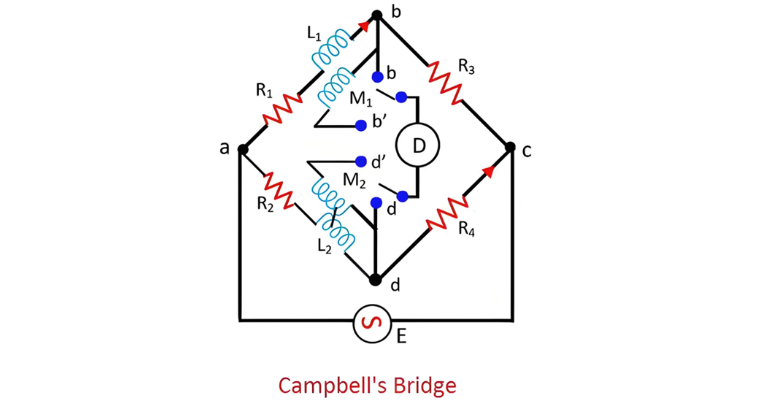Campbell Bridge: Definition and Function
Definition
The Campbell bridge is a specialized electrical bridge designed to measure unknown mutual inductance. Mutual inductance refers to the physical phenomenon where a change in the current flowing through one coil induces an electromotive force (emf) and, consequently, a current in a neighboring coil. This bridge is not only useful for determining mutual inductance values but can also be employed to measure frequency. It does so by adjusting the mutual inductance until a null point is achieved in the bridge circuit.
In electrical engineering, accurately measuring mutual inductance is crucial for understanding the interaction between different coils in circuits, such as in transformers, inductive coupling systems, and various electrical machinery. The Campbell bridge provides a precise and reliable method for these measurements. When used for frequency measurement, the null - point detection principle allows engineers to establish a relationship between the mutual inductance setting and the frequency of the electrical signal under test.
The following figure illustrates the concept of mutual inductance, which forms the foundation for the operation of the Campbell bridge.

Let:
- M1 represent the unknown mutual inductance
- L1denote the self - inductance of the secondary of mutual inductance M1
- M2signify the variable standard mutual inductance
- L2 be the self - inductance of the secondary of mutual inductance M2
- R1, R2, R3, R4 stand for non - inductive resistances
Achieving the balanced position of the Campbell bridge necessitates a two - step procedure:
The detector is initially connected between points ‘b’ and ‘d’. In this configuration, the circuit functions analogously to a simple self - inductance comme

-
First Balancing Step To bring the bridge to a balanced condition in the first stage, resistors R3 or R4, along with R1 and R2, are adjusted. This adjustment process fine - tunes the electrical parameters of the circuit, ensuring that the electrical potential differences across the relevant parts of the bridge are equalized, much like adjusting the weights on a balance scale to achieve equilibrium.
-
Second Balancing Step In the next phase, the detector is reconnected between points b' and d'. Building on the adjustments made in the first step, the variable standard mutual inductance M2 is then systematically varied. Through this process of varying M2 while maintaining the previously set resistor adjustments, the overall electrical configuration of the bridge is further optimized. Eventually, a balance point is reached, indicating that the bridge has achieved a state of equilibrium where the electrical signals in the circuit are in harmony, and accurate measurements of the unknown mutual inductance M1 can be made.

















